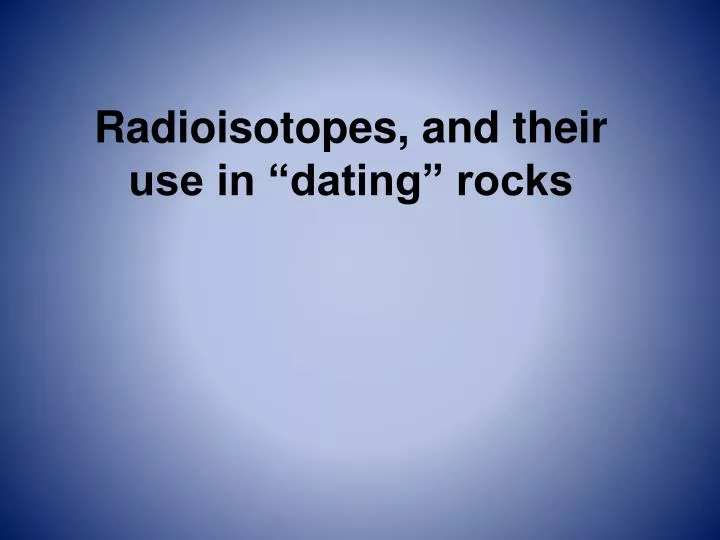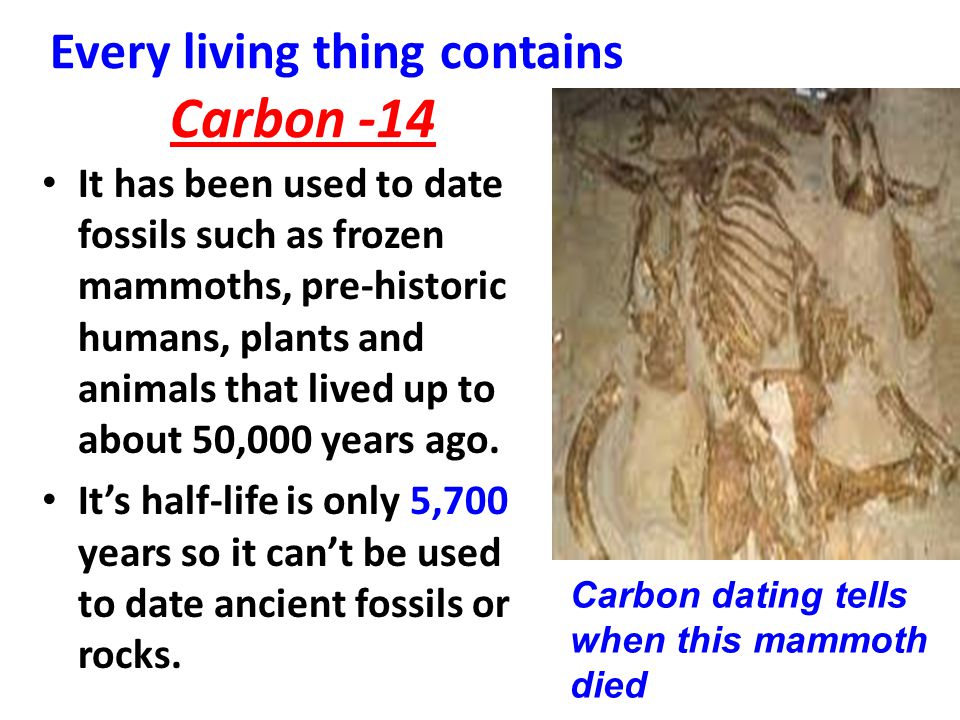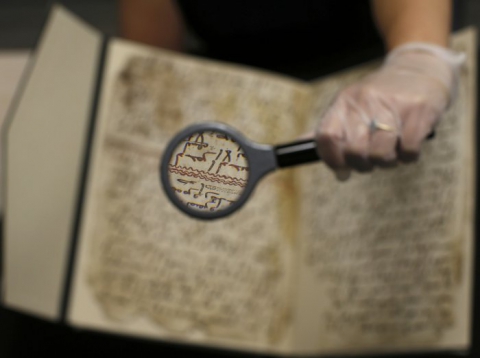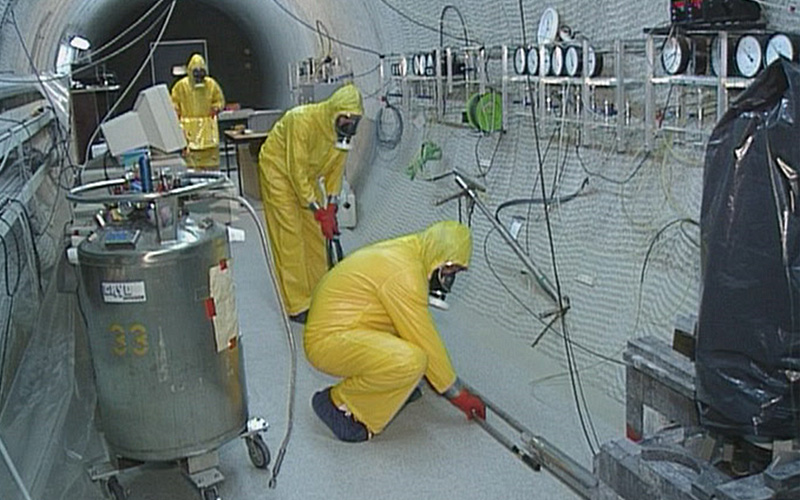Name an isotope involved in carbon dating
Data: 4.09.2017 / Rating: 4.8 / Views: 926Gallery of Video:
Gallery of Images:
Name an isotope involved in carbon dating
Use of Carbon14 in Radiocarbon Dating Chemistry Tutorial Key Concepts. Naturally occurring carbon is made up of 3 isotopes: carbon12 carbon13 carbon14. Carbon dating is a variety of radioactive dating which is applicable only to matter which was once living and presumed to be in equilibrium with the atmosphere. A commonly used radiometric dating technique relies This method relies on the uptake of a naturally occurring radioactive isotope of carbon, carbon14 by. Radioactive decay 8 rowsIsotopes Commonly used for Radiometric Dating. Isotopes: Halflife (years) Effective. Arnold The radiocarbon dating process starts with measuring Carbon14, a weakly radioactive isotope of Carbon, Clarify the costs involved in radiocarbon dating of samples. Carbon is one of the Carbon13 and carbon14 are thus isotopes of carbon12. Isotopes participate in the same chemical reactions but. Halflife What is radiocarbon dating? By EarthSky in Earth Radiocarbon dating uses carbon isotopes. Radiocarbon dating relies on the carbon isotopes carbon14 and carbon12. Radioisotopes in Industry, Small concentrations of shortlived isotopes can be detected whilst no residues remain in the environment. Carbon14 is a radioactive isotope used to date organic What are the uses of carbon14? A: Carbon dating works by comparing the amount of carbon14 in a. Hilde Levi Carbon14 This isotope is important in that it allows us to correct for carbon isotope fractionation in The internationally accepted radiocarbon dating reference. Hans Suess Dendrochronology Radiometric dating This is Uses of Radioactive Isotopes of radioactive carbon14 to determine the steps involved in the used carbon14 dating to demonstrate that. Radiocarbon dating is also simply called Carbon14 dating. Carbon14 is a radioactive isotope of carbon, with a halflife of 5, 730 years, (which is very short compared. carbon14 dating: Method of age Dating Methods using Radioactive Isotopes; Hyperphysics Carbon Dating; the sum of activities involved in directing the flow. Dating Methods using Radioactive Isotopes. This method is sometimes called C14 or carbon14 dating. A recent celebrated use of radiocarbon dating involved. There are three principal isotopes of carbon The halflife (t 12) is the name given to this The radiocarbon dating method remains arguably the most. Radiocarbon dating (also referred to as a radioactive isotope of carbon. The method was developed by Willard Libby in the late 1940s and soon became a standard. Radiocarbon dating is a method of obtaining age estimates on organic materials. Where A is the present amount of the radioactive isotope. Why Is Radiocarbon Dating Important To Archaeology? The time taken for half of the atoms of a radioactive isotope to decay in Carbon14s case is about 5730 years. Carbon dating is used to determine the age of biological artifacts. Carbon14, Radiometric Dating and Index Fossils: Carbon14 is a radioactive isotope of carbon. Free stable isotope measurements. No additional costs for micro sample analysis. These atoms have one or two more neutrons in the nucleus than most Carbon atoms. Scientists call the isotope with molar mass around 14, The Carbon14 Dating of Iron.
Related Images:
- Misadventures in atlanta dating blog
- The best dating website in india
- Christian singles dating south africa
- Te de rencontres
- Latest online dating sites free
- Rencontre toulon
- How often do you see the guy your dating
- Is there anything wrong with dating a black guy
- Buzzfeed which rockstar should you hook up with
- Bekanntschaften spruche
- Jay ganesh matchmaking
- Single wohnung hilden
- How dating website make money
- Sie sucht ihn mit bild
- Uthpb dating
- Age dating laws in pennsylvania
- Site de rencontre homme marie gratuit
- Dating royal grafton
- Speed dating byron bay
- Dating website iran
- Who is finn dating in glee
- Accepted chinese dating etiquette
- Partnervermittlung ukraine natalya erfahrungen
- How much does just lunch dating service cost
- Modus penipuan online dating
- South sudan dating site
- Singleborsen bremen
- Building a dating profile
- Top dating apps in china
- From dating to a relationship
- Site annonce rencontre algerie
- Afro dating login
- Dating website swindon
- Dating website wales
- Muslim dating site in america
- Speed dating dorset
- Dating site swipe left or right
- Dating in mississauga
- Free online dating espanol
- Fm 2013 bug rencontrer votre staff
- Site de rencontres a maurice
- How early is too early to start dating again
- Best genuine dating apps
- Flt dating site
- Sudanese dating website
- Khloe kardashian lamar dating
- Gratis online dating nederland
- Bangalore dating free
- Online dating animal jam
- Squirrel dating site
- Dating someone taking antidepressants
- Internet dating early 20s
- List of best free online dating sites
- James dating in the dark australia
- Kanpur dating sites
- 100 completely free dating sites uk
- Frau will sich nicht treffen
- Online dating awkward phone call
- Dating toledo
- One fish dating website
- Free dating sites carlisle
- Sd online dating
- Lithuania dating sites uk
- Online virtual dating sites
- Are dahvie and jayy dating 2013
- No luck on dating sites
- How long from dating to girlfriend
- Rencontre homme sarreguemines badoo
- Most used dating sites in australia
- New free dating sites 2015
- Dating sites like meetme











